Visit Weather

What is the best time of year to visit heritage sites ?
The best time to visit heritage sites is often during the shoulder seasons of spring and autumn, offering mild weather, fewer crowds, and vibrant flora. Spring brings blooming gardens and natural landscapes while autumn showcases fall foliage. Summer, though peak tourist season with longer daylight hours, can be hotter and more crowded. Winter provides a unique atmosphere with holiday events but requires proper clothing for cold weather. Shoulder seasons and weekdays generally offer less crowded experiences, and local events can enrich visits. Budget-wise, off-peak travel can save on costs. Ultimately, the ideal time depends on individual preferences for weather, crowds, and budget.

What are the best times of year to visit popular island destinations ?
Visiting popular island destinations can be a dream come true for many travelers. However, the experience can vary greatly depending on the time of year you choose to go. Here are some tips on the best times to visit popular island destinations: ## **Hawaii** - ### **Best Time to Visit** The best time to visit Hawaii is during the summer months (June to August) when the weather is warm and sunny. This is also the peak season, so expect higher prices and larger crowds. - ### **Things to Do** During your visit, don't miss out on hiking to Diamond Head State Monument, visiting Pearl Harbor National Memorial, or taking a surfing lesson at Waikiki Beach. - ### **What to Pack** Pack light and comfortable clothing, sunscreen, sunglasses, and a hat. Don't forget your swimsuit and flip flops too! ## **Maldives** - ### **Best Time to Visit** The best time to visit the Maldives is from December to April when it's dry season and the weather is sunny and warm. - ### **Things to Do** While in the Maldives, make sure to go snorkeling or diving in the crystal-clear waters, relax on one of the many beautiful beaches, or take a boat trip to explore the nearby islands. - ### **What to Pack** Pack light and airy clothes, sunscreen, sunglasses, and a hat. Don't forget your swimsuit and flip flops too! ## **Bali (Indonesia)** - ### **Best Time to Visit** The best time to visit Bali is between May and September when it's dry season and the weather is sunny and warm. - ### **Things to Do** While in Bali, make sure to visit the Tegalalang Rice Terrace, watch a traditional Balinese dance performance, or take a surfing lesson at Kuta Beach. - ### **What to Pack** Pack light and comfortable clothing, sunscreen, sunglasses, and a hat. Don't forget your swimsuit and flip flops too!

What is the best time of year to visit Africa for an adventure trip ?
The best times to visit Africa for an adventure trip vary by region and activity. East African countries like Kenya, Tanzania, and Uganda are best visited from June to October during the dry season, ideal for safaris and hiking. Southern Africa, including South Africa, Botswana, Zambia, and Zimbabwe, is suitable for visits from May to September, offering great opportunities for safaris and water sports. West Africa, encompassing Ghana, Nigeria, and Senegal, is recommended from November to February for historical tours, cultural experiences, and beach relaxation. Overall, the dry season from May to October is generally considered the best time for outdoor activities across most of Africa.
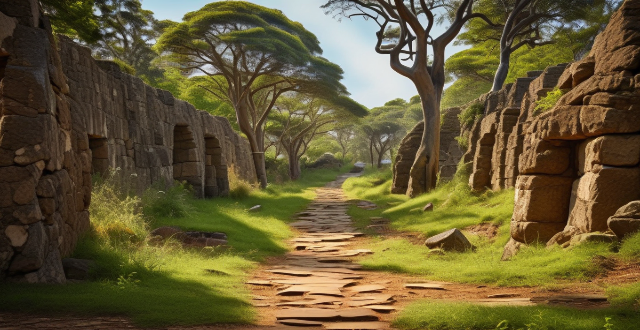
How can I make the most of my visit to a heritage site ?
Heritage sites are places that have cultural, historical, or natural significance. To make the most of your visit to a heritage site, you need to plan ahead, be prepared, and engage with the site in meaningful ways. This guide explores tips and strategies for preparation, on-site experience, and post-visit reflection. By following these tips, you can have a meaningful and enriching experience that enhances your understanding and appreciation of the heritage site.
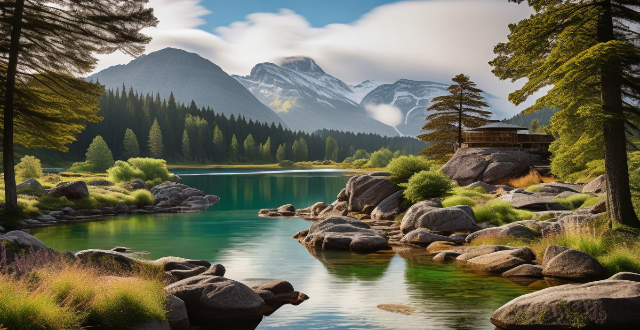
How do I find less crowded photography spots in popular tourist locations ?
To find less crowded photography spots in popular tourist locations, conduct research beforehand using Google Maps, social media, local blogs, and travel guides. Upon arrival, visit the tourist information center and ask locals for recommendations. Consider visiting during off-peak hours and look for alternative viewpoints or angles. Keep an eye on weather conditions and be flexible with your plans. During your visit, wake up early, stay out late, use long exposures, seek elevated positions, utilize natural barriers, be patient, and edit later if necessary.

How often should I visit a sports rehabilitation center after an injury ?
The frequency of visits to a sports rehabilitation center after an injury depends on factors like the severity of the injury, individual healing capacity, and recommended treatment plan. Major injuries may require daily sessions initially, while minor injuries might need weekly visits. Individual healing rates also play a role, with some needing more time and support. The treatment plan outlines the recommended visit frequency and necessary interventions. Regular progress tracking helps determine if adjustments are needed. It's crucial to work closely with healthcare professionals for an effective rehabilitation process.

What is the difference between weather and climate ?
This text defines and differentiates between weather and climate. Weather is described as a short-term phenomenon, characterized by its variability, localized nature, and influence on daily activities. In contrast, climate is defined as a long-term pattern, distinguished by its stability, regional scope, and impact on ecosystems and agriculture. The text emphasizes the importance of understanding these differences for decision-making in various aspects of human life.

How does climate change influence weather patterns and extreme weather events ?
Climate change significantly affects weather patterns and increases the frequency and intensity of extreme weather events. It influences global wind patterns, changes in ocean currents, and variations in seasonal patterns. Moreover, it leads to more frequent and intense heatwaves, severe storms and hurricanes, extreme precipitation events, and droughts. These impacts highlight the urgent need for action to mitigate climate change and adapt to its effects.
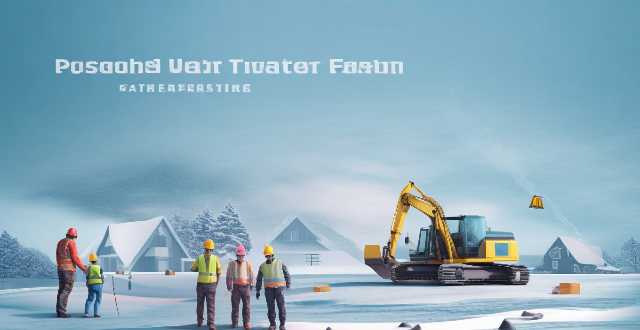
How do weather conditions affect building safety during construction ?
The text discusses the impact of various weather conditions on building safety during construction. It highlights the risks associated with extreme heat, cold weather, rain and water, strong winds, snow and ice, and lightning and thunderstorms. The conclusion emphasizes the importance of monitoring weather forecasts and adjusting working procedures to ensure worker safety.

What are some examples of recent extreme weather events ?
This article discusses recent examples of extreme weather events that have caused significant damage to human life, property, and the environment. These include Hurricane Ida (2021), Australian Bushfires (2019-2020), California Wildfires (2020), European Heatwave (2019), Japanese Typhoon Hagibis (2019), and Indian Cyclone Amphan (2020). The article concludes by emphasizing the need for individuals, communities, and governments to take action to mitigate the effects of these events and adapt to changing weather patterns.

How does weather affect radio communication interference ?
The text discusses how weather conditions can impact radio communication interference. It lists various types of weather such as rainfall, fog, thunderstorms, snow, sunspots, wind, and humidity and explains how each type can affect radio signals. For example, raindrops can absorb and scatter radio waves, reducing the strength of the signal, while thunderstorms can produce static discharges that interfere with nearby frequencies. The text emphasizes the importance of considering these factors when planning and managing wireless communications networks.

How does climate variability affect global weather patterns ?
The impact of climate variability on global weather patterns is substantial, affecting temperature, precipitation, wind patterns, and extreme weather events. Key influences include El Niño and La Niña phases, monsoon systems, altered rainfall distribution, jet stream variations, tropical cyclones, heatwaves, cold spells, storms, floods, and droughts. Long-term climate trends like global warming also significantly affect weather patterns. Understanding these interactions is crucial for predicting future conditions and addressing climate-related challenges.
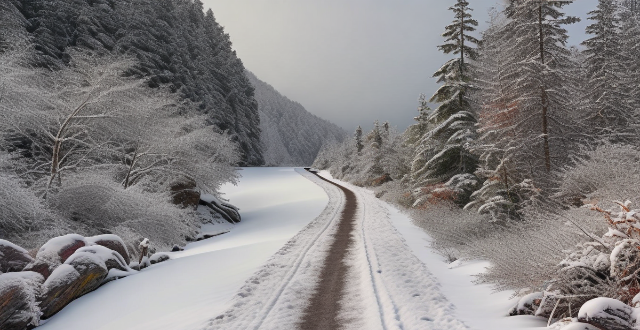
What are the best times of year to visit popular photography locations ?
This guide discusses the optimal times of year to visit popular photography locations, including Yosemite National Park, Antelope Canyon, and Banff National Park. It highlights the unique features and conditions that make each season ideal for capturing stunning images. By planning trips during these periods, photographers can take advantage of natural phenomena like blooming wildflowers, vibrant autumn foliage, striking light beams, and winter wonderlands to create unforgettable photographs. Factors such as weather patterns, crowd levels, and tour availability should also be considered when planning photography adventures.
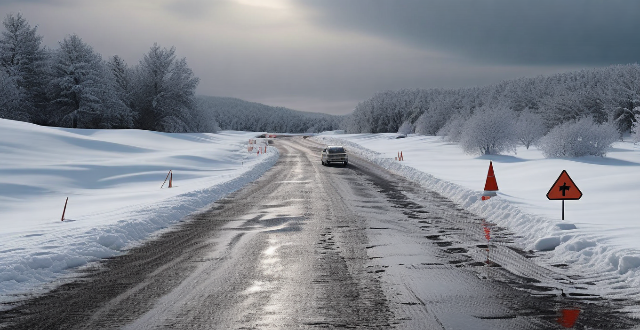
How does weather affect traffic safety ?
Weather conditions significantly impact traffic safety, with adverse weather increasing the risk of accidents. Understanding how different weather conditions affect driving abilities and taking necessary precautions are essential for ensuring safety. Rain, snow, ice, fog, and wind all pose unique challenges to drivers, such as reduced visibility and slippery roads. To drive safely in these conditions, maintain vehicle readiness through regular maintenance and adjust driving habits by slowing down and increasing following distance. Additionally, being prepared for emergencies with an emergency kit and planning your route can further enhance safety. By prioritizing safety and adapting to weather conditions, drivers can significantly reduce the likelihood of accidents and ensure safer journeys for everyone on the road.

What impact do extreme weather events have on consumer purchasing habits ?
Extreme weather events, such as hurricanes, floods, and heatwaves, significantly impact consumer purchasing habits. These changes in buying behavior are often driven by necessity, fear, and the desire to be prepared for future events. The text discusses the various ways extreme weather events can influence what and how consumers purchase. It also highlights the need for businesses and retailers to adapt to meet the changing demands and priorities of their customer base.

How do electric cars perform in cold weather conditions ?
Electric cars, while eco-friendly and cost-efficient, face challenges in cold weather, particularly affecting battery performance and range. Strategies like preconditioning and using warm garages can mitigate these issues. Cold weather also increases energy use for heating, but efficient practices can help manage this. Tire pressure and traction are other concerns that require attention. Despite these challenges, EVs maintain their quiet and smooth driving experience, even in cold conditions, with the advantage of instant torque beneficial in slippery situations.
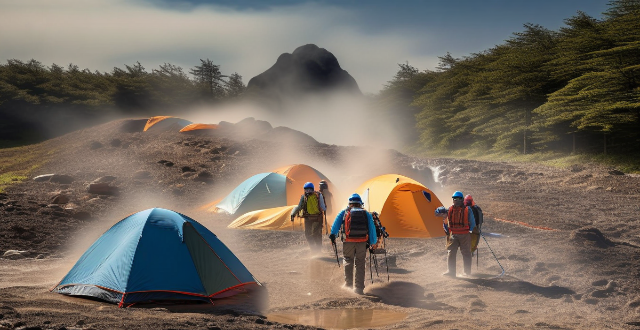
How can we predict and prepare for extreme weather events ?
Predicting and preparing for extreme weather events is a critical aspect of modern society. With advancements in technology and scientific research, we now have the ability to forecast these events with greater accuracy than ever before. However, predicting and preparing for extreme weather events requires a multi-faceted approach that involves both scientific knowledge and practical preparation. In this article, we will explore some of the key ways in which we can predict and prepare for extreme weather events.
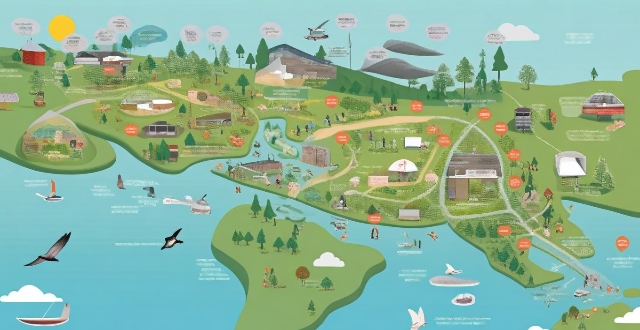
How do extreme weather events affect global climate change ?
Extreme weather events, such as hurricanes, floods, droughts, and heatwaves, have a significant impact on global climate change. They can exacerbate existing climate conditions and contribute to the overall warming of the planet by increasing greenhouse gas emissions, affecting ecosystems and biodiversity, disrupting agriculture and food production, and impacting human health and well-being. It is essential that we work together to mitigate the effects of extreme weather events and address the root causes of climate change to ensure a sustainable future for all.
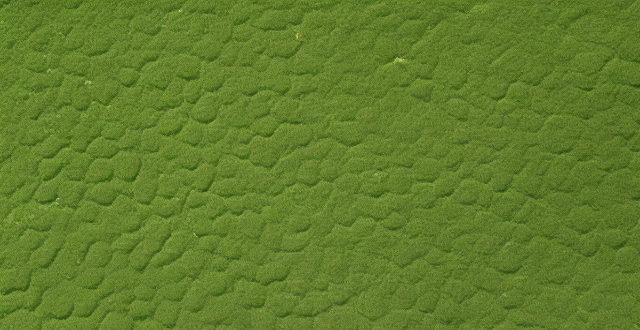
What is the difference between weather forecasting and climate prediction ?
Weather forecasting and climate prediction are two related but distinct fields with different scopes, timescales, and methodologies. Weather forecasting focuses on short-term predictions for specific locations, while climate prediction looks at long-term trends and patterns globally.

What are the main causes of extreme weather events ?
Extreme weather events, such as hurricanes, tornadoes, floods, and droughts, are caused by a combination of natural climate variability, human activities, and changes in the Earth's climate system. Natural climate variability includes phenomena like El Niño and La Niña, which can cause extreme weather conditions around the world. Human activities, such as greenhouse gas emissions, land use changes, and pollution, also play a significant role in causing extreme weather events. Changes in the Earth's climate system, such as sea level rise, ocean acidification, and changes in atmospheric circulation patterns, can also contribute to extreme weather events. Addressing both the underlying causes and implementing adaptation strategies is important to mitigate the impacts of these events.

Can climate data analysis accurately predict future weather patterns ?
Climate data analysis, utilizing sophisticated climate models based on physical laws and accounting for complex interactions within the Earth system, plays a crucial role in predicting future weather patterns. These models allow scenario-based projections and ensemble forecasting to account for uncertainties. While they are continuously improved as new scientific understanding emerges, it's important to distinguish between weather forecasting (short-term events) and climate prediction (long-term trends). Climate prediction involves more variables, broader trends, external forcings, and wider confidence intervals compared to weather forecasting. However, climate models face uncertainties such as natural variability, model discrepancies, emission scenarios, feedback mechanisms, and regional differences. Despite these challenges, climate science has made progress in predicting aspects like global warming, sea level rise, extreme weather events, regional changes, and carbon cycle responses. In conclusion, climate data analysis can provide valuable insights into potential future climate patterns but comes with inherent uncertainties, especially in forecasting specific weather events far into the future. Ongoing advancements in climate science aid in developing informed policies and adaptation strategies.

How do scientists study and analyze extreme weather events ?
Scientists study and analyze extreme weather events using various methods, including data collection from meteorological stations, satellite imagery, radar, lidar, climate records, and paleoclimate data. They also use numerical weather prediction models, ensemble forecasting, global circulation models, and regional climate models for simulations and predictions. Statistical methods, trend analysis, attribution studies, synoptic climatology, and teleconnections are employed for analysis. Collaboration and public outreach play crucial roles in sharing information and findings.

How does the greenhouse effect affect weather patterns ?
The greenhouse effect is a natural process that maintains Earth's warm temperatures, making life possible. However, human activities like burning fossil fuels and deforestation have increased the concentration of greenhouse gases, leading to global warming. This enhanced greenhouse effect affects weather patterns by causing higher global temperatures, changes in precipitation patterns, extreme weather events, disruption of seasonal patterns, and changes in ocean currents. Addressing this issue requires reducing greenhouse gas emissions and adapting to the changing climate.

How do extreme weather events relate to climate change ?
Extreme weather events, such as hurricanes, heatwaves, floods, and droughts, have become more frequent and intense in recent years due to climate change caused by human activities. Climate change leads to increased temperatures, changes in precipitation patterns, stronger storms, and impacts on ecosystems. Examples of extreme weather events linked to climate change include Hurricane Sandy, Australian Bushfires, European Heatwaves, and the Indian Ocean Dipole. It is crucial to take action to mitigate the effects of climate change and adapt to the changing climate.
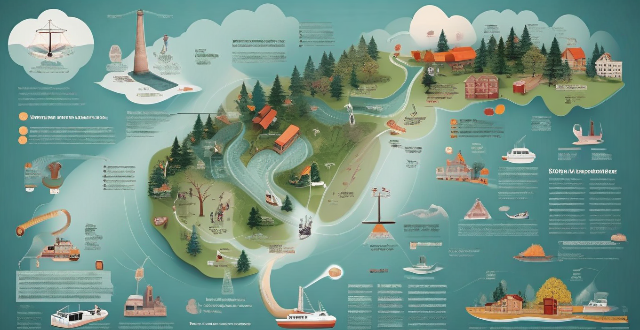
What are the impacts of climate change on global weather patterns ?
Climate change, driven by human activities like burning fossil fuels and deforestation, is altering global weather patterns. These changes include increased frequency and intensity of extreme weather events such as heatwaves, heavy precipitation, droughts, and storms, as well as changes in seasonal weather patterns like early spring onset and altered monsoon patterns. Long-term changes in weather patterns include polar amplification, ocean circulation changes, and atmospheric circulation changes. These impacts pose significant challenges for adaptation and mitigation efforts aimed at reducing negative effects on ecosystems, societies, and economies worldwide.

What is the relationship between climate change and extreme weather events ?
The text discusses the correlation between climate change and extreme weather events. It outlines how climate change, caused by human activities such as burning fossil fuels and deforestation, leads to an overall rise in global temperatures, affecting precipitation patterns and increasing storm intensity. This results in more frequent and severe heatwaves, changes in rainfall leading to floods or droughts, and more intense storms including hurricanes, cyclones, and typhoons. The essay concludes that there is a clear relationship between climate change and extreme weather events, and emphasizes the urgency of taking action to mitigate climate change and adapt to its impacts.

What are the impacts of extreme weather events on building designs ?
Extreme weather events significantly impact building designs, affecting structural integrity, energy efficiency, and sustainability. To withstand high winds, heavy rains, and seismic activity, buildings must be designed with increased resilience using advanced materials and construction techniques that enhance their structural integrity. Improved foundations are also necessary to support the weight of buildings and resist forces exerted by extreme weather conditions. Energy efficiency is another area impacted by extreme weather events. Buildings must be designed to minimize heat loss or gain during extreme temperatures, requiring enhanced insulation and proper sealing of windows and doors. Incorporating renewable energy sources such as solar panels and wind turbines can reduce reliance on non-renewable energy sources and make buildings more sustainable. Sustainability is also a crucial factor in building designs affected by extreme weather events. Green roofs and walls help reduce the urban heat island effect, improve air quality, provide insulation, and absorb rainfall. Water management systems, including rainwater harvesting and permeable surfaces, are essential for coping with floods and droughts. Overall, architects and engineers must consider factors such as structural integrity, energy efficiency, and sustainability when designing buildings to ensure they can withstand extreme weather conditions while minimizing their environmental impact. By incorporating advanced materials, construction techniques, renewable energy sources, green roofs and walls, and effective water management systems, we can create buildings that are both resilient and sustainable.

What are the best times of year to go on a nature and wildlife vacation ?
The text is a guide to choosing the best time for nature and wildlife vacations. It suggests considering weather conditions, animal migration patterns, crowd levels, and local events when planning a trip. Spring is considered the best time for such vacations because of mild weather and lush landscapes, while summer offers warm weather but potentially crowded destinations. Fall provides beautiful scenery and cooler temperatures for hiking and wildlife spotting, while winter can offer unique opportunities for certain types of wildlife viewing. The text also advises researching specific animal migration schedules if interested in seeing particular species. It recommends visiting during shoulder or off-season for a quieter experience and considering local events for a cultural element. Overall, the guide emphasizes careful consideration of various factors to plan an immersive and rewarding nature and wildlife vacation.
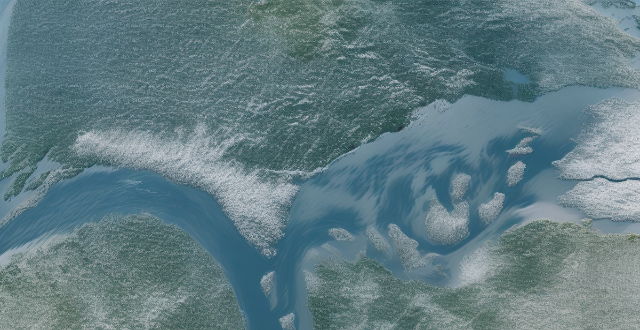
How do extreme weather events caused by climate change affect employment rates ?
This article explores the impact of extreme weather events caused by climate change on employment rates in various sectors, including agriculture, construction, and tourism. It highlights the vulnerability of these sectors to extreme weather events such as droughts, floods, heatwaves, hurricanes, tornadoes, wildfires, storms, rising sea levels, and reduced snowfall. The article also discusses potential mitigation strategies that can help reduce the impact of these events on employment rates in the affected sectors.